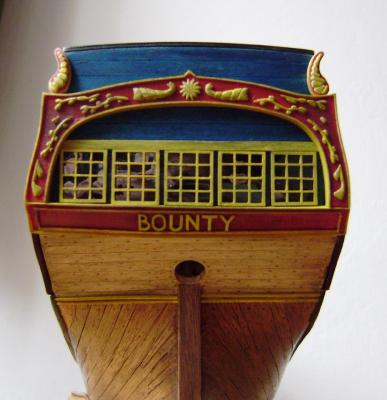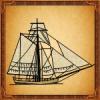-
Posts
23 -
Joined
-
Last visited
Content Type
Profiles
Forums
Gallery
Events
Posts posted by Krutzelpuntz
-
-
Very well done. Thank you for sharing the process!

-
-
Must say it's really coming into shape. She's going to be a real big beauty!

-
Hello Frank
Can you be more specific on the scale you are working in? It is an interesting project I must say, hope you will attempt to succeed

-
Your work space brings up dreams in me. Living in the city has a lot of bad aspects. Someday day I will have great space, but for now I'll have to work mainly at my parents.

Your work is solid and clean. Looks good!
Happy Christmas, by the way!

-
Great build, really great!
Looking forward to see how it will end, and good luck with figuring out your little (big) cannon problem.
Happy Christmas!

-
Very nice model. I like the rc steamship idea. Don't worry about the quality, it seems quite alright, and no place takes harm from diversity!

I would like to see your building process in more detail, at future work. If in doubt of how to do anything here on the forums, don't be afraid of asking. Well, you can even make a new thread in this section: Questions/instructions on how to use and post to this forum/Site Problems or suggestions (link)
Check it out, it's good reading when in doubt
-
-
Those anchors look really good.
Happy Christmas,
Jakob
-
Nice work on the 3D model, and thank you, you just gave me a book

Was the model for printing? I'd love to have a 3D printer, but on the other hand, the old way is so much more rewarding!
Edit: I see what you mean with googles quality issue. But the text seems fine, I should have all the information I need

-
I see, thank you for explaining, Jay
 It all makes sense now. Maybe except for the cannon itself, but I'm quite sure I can figure it out, after a while
It all makes sense now. Maybe except for the cannon itself, but I'm quite sure I can figure it out, after a while 
This will be very helpful indeed.
Cheers, Jakob
-
Great information, Jay. I'm quite sure the quality is just fine!
Is it already in scale? I have a hard time understanding the English measurements..

Regards, Jakob
Edit: Just took a last look, and the table on the right seems to give three scales.. Though I still don't know how to read it properly.
-
Brian Lavery's book Arming and Fitting British Ships of War has a lot of good information. Adrian Caruana has more, but his books are hard to come by at any price. I believe Lavery has a set of detailed dimensions on a four pounder, but I do not recall if it is right for 1745.
Allan
Thank you Allan!
The book seems really interesting.
 I will try to get my hands on it, though it is unlikely I can get it in my money-league here in Denmark.
I will try to get my hands on it, though it is unlikely I can get it in my money-league here in Denmark. -
Krulzelpuntz:
http://www.castem.co.jp/lostwax/e-tech.html.
Just one site that will show and explain the process much better than I could ever do, you will see that the tree is only a structure built from the wax patterns themselves, all joined together so one pore will fill them all. I would think that the method could be adapted to using resin, might require an injection device or a large sprue so the mold can be filled from the bottom to prevent voids.
Casting metal guns, just as casting resin guns can be rewarding in itself, it also is knowledge that could be applied to other needs. Have read that molten metal, pored into a sand mold was the plastic for the world for hundreds of years and castings still are produced in great numbers. Few small foundry's have survived, but the means and reference material for an individual to produce their own casting, still exists.
jud
Thanks for providing the link! To me it seem easier to do it the old "2 part mold", as I probably won't be making over 12 cannons. I also like the idea of keeping the mold
 the tree method would be for a larger amount of moldings i recon??
the tree method would be for a larger amount of moldings i recon??Regards, Jakob!
-
Thank you Krutzelpuntz, i forgot say, that the replacement for a glass is a fiol out of disket.
Yes, I could imagine. it would probably respond poorly to heat, would just curl up. I was thinking of some thicker plastic. I'll have to try it out some day.

Maybe this glass wasn't used on ships at all, i'll have to find out.
-
The lost wax process produces very good castings, you make one mold to produce the wax patterns, you then can produce as many wax patterns as you want. To create a mold from those wax patterns you build what is called a tree using your wax castings and connect them all together with wax runners and risers in a manner that will all fill the whole mold and vent the air out. There needs to be cavity's in the mold that allows for enough mass so the desired castings can draw molten material from, to fill any voids created because of the faster cooling of the smaller castings. When the tree is completed you build the real mold around the tree, when made, you melt the wax out of the mold. You can produce 10 or more cannons per pore this way. Jewelers use the lost wax process because it creates very detailed and sharp castings if the final mold material allows for that, often two mixes are used, fine material against the wax, usually brushed on, and a courser mold body.
jud
I don't understand the "tree-method". Could you provide a picture, maybe a creative paint version?

I'm interested, as I'm planing to make a set of cannons soon.
-
I haven't decided on a specific model yet, and i think it will rely very much on what plans i can get my hands on. But I have had some thoughts on the Mediator which sailed under Great Britain, and was armed with 10 4-pounder cannons in 1745.
It would be my first model, and this one seems relatively small and manageable.
This would mean that I'm actually looking for a British 4-pound cannon from 1745.
Kindest of regards, Jakob

-
This is really nice work, and especially for a first model. I am very impressed. It might be too late, but if i'm not mistaken, the windows made at this time had a small outwards curve. I have been unable to find any examples, but I just got an idea that this effect could be achieved by heating up the plastic.
I got the idea when i saw this picture, where the effect is already indicated.

Really nice weathering too!
Best regards, Jakob
-
-
Thanks a lot Antony. That is really helpful!

-
I'm planing for the future to build a sloop in scale 1:48, and for armament I will have 10 6-pound cannons, unless convinced otherwise

It's probably going to be 18-1850.
I would like to scratch-build the ship, and of course also the cannons. I have done some research, but have not been able to find the measurements of a 6-pound naval cannon, and part of this is probably because I don't know enough on the subject.
So the question is, what are the measurements of a 6-pound naval cannon around 1800?
For those who can read this, here is what I came up with, but I had to use very doubtful sources, and some guessing.
The left side numbers are lengths, and right side width (spelled that one wrong)
The gun should be 1,65 meters long real life.
Thank you for your time

Edit, added 4-pound to title





34ft Danish Cutter by adamdt
in - Build logs for subjects built 1901 - Present Day
Posted
I'm so happy you decided to build this! It's such a beautiful boat, I'm delighted to get the chance to follow your progress. I have been waiting
for someone to give the cutter a try